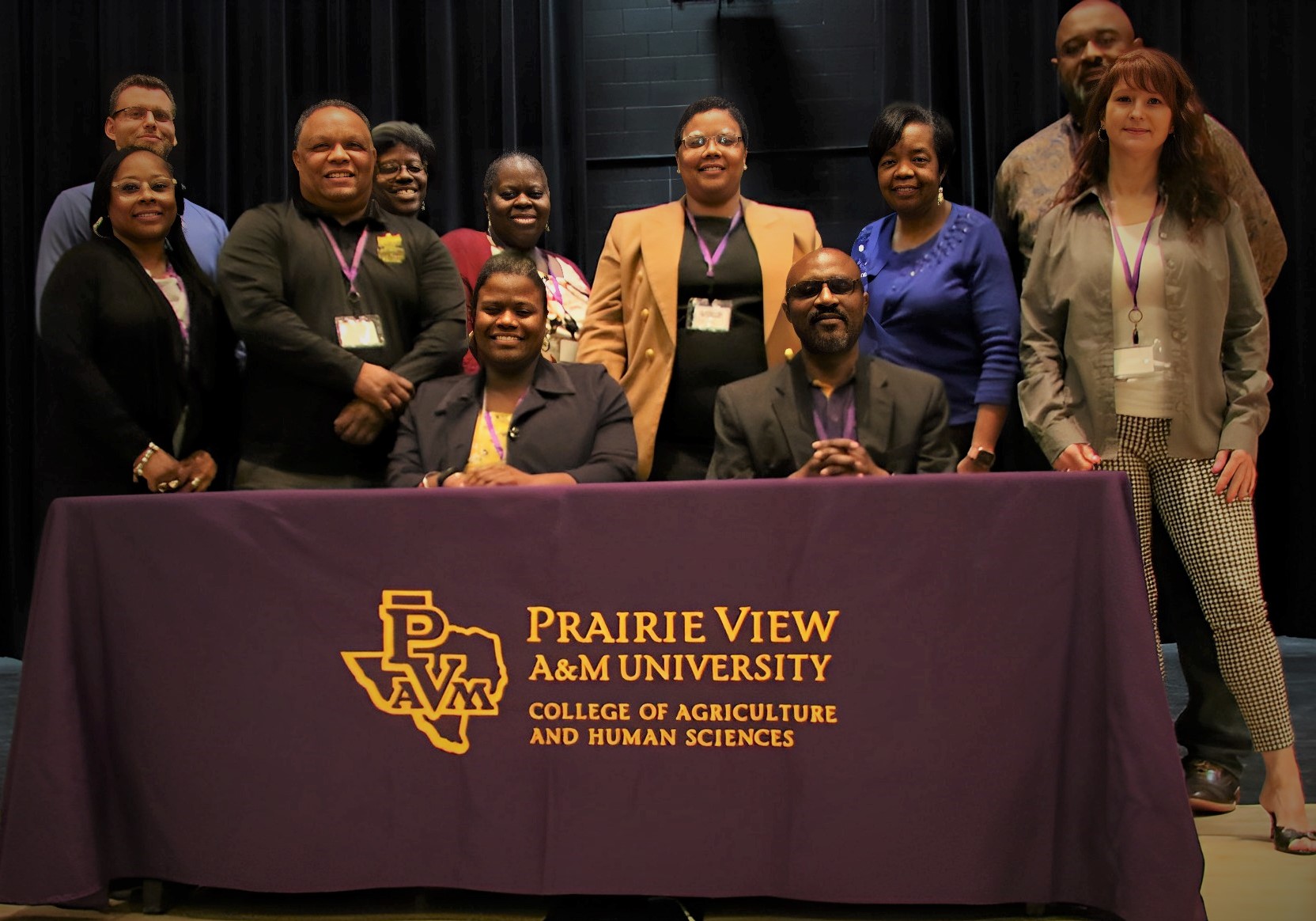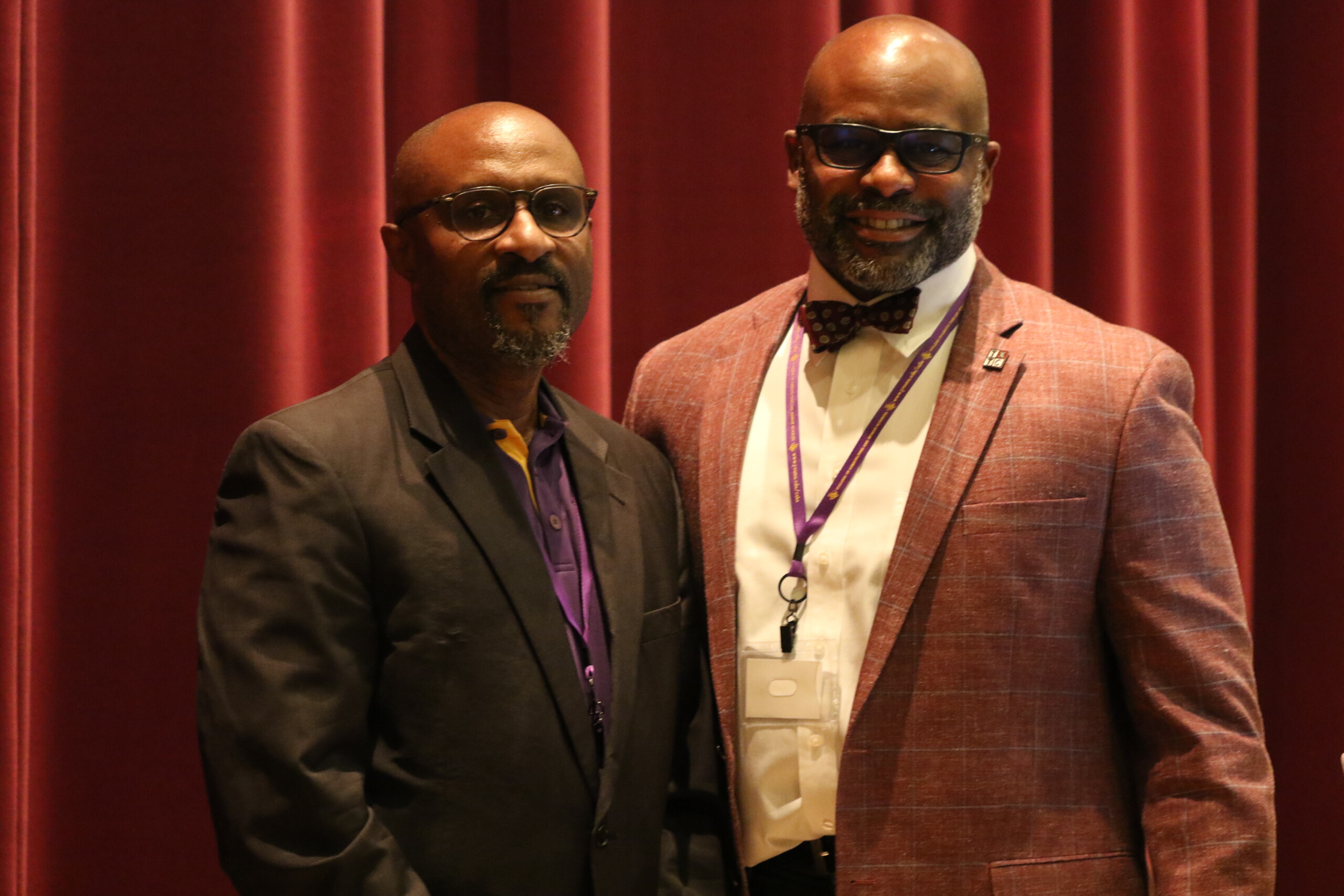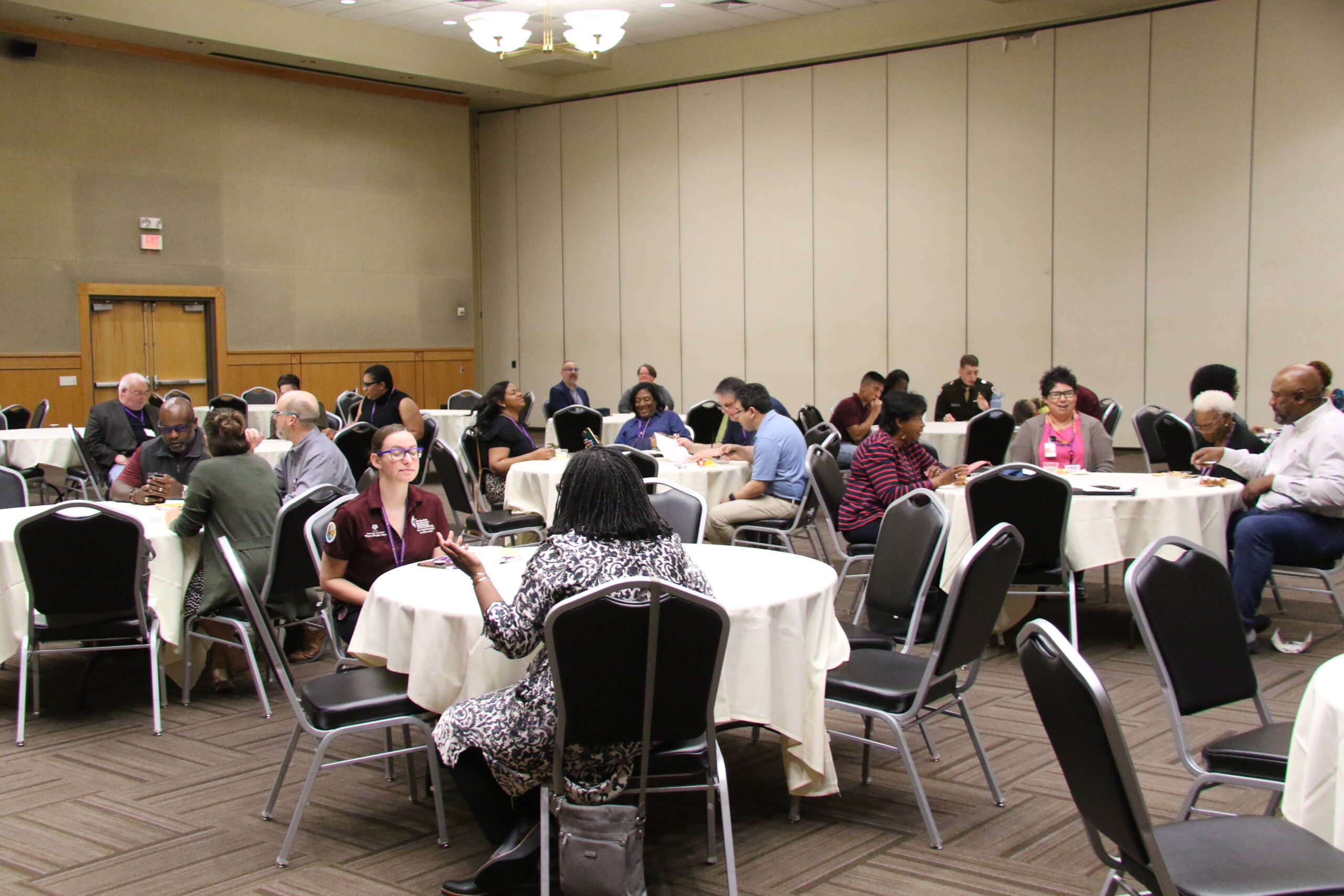PRAIRIE VIEW, Texas – Prairie View A&M University College of Agriculture and Human Sciences hosted its third annual Disaster Preparedness, Response, Innovation, Mitigation and Recovery (PRIMR) Conference from March 5-7. The event brought together disaster preparedness experts and community members interested in learning more about the immediate and long-term impacts of natural and man-made disasters in hopes to facilitate better preparedness plans for future weather events.
The theme of the conference was “Promoting Cultures of Preparedness” with a goal to provide an opportunity for people from distinct cultures to meet, either for the first time or in a setting meant for meaningful discussions and cultural humility. The conference kicked off with an evening reception and poster presentation in the Willie A. Tempton, Sr. Memorial Student Center. The dinner hosted members of the Alabama-Coushatta Tribe of Texas. According to CAHS Professor and PRIMR Conference coordinator, Noel Estwick, Ph.D., the tribe, located an hour and a half north of Houston in the Big Thicket, is the oldest Indian reservation in Texas and has a unique story dating back to before the 1700s. From their migration to what is now Texas to their role in aiding Sam Houston during the Texas War of Independence to the federal government’s official recognition of our nation in 1987, the Alabama-Coushatta Tribe boasts a rich history and beautiful enclave that is admired by tribal citizens and tourists alike love.
Dr. Estwick said it was important for the conference to make key cultural connections like those formed with the Alabama-Coushatta Tribe to strengthen communication between the college and the surrounding community.
“One of the first things we talked about during the conference was how to approach different cultures respectfully,” Dr. Estwick said. “Whom to speak to, whom to engage in conversation. Do we shake hands? Part of the discussion was simply learning their appropriate names and titles to start the relationship correctly.”
Monday began with morning refreshments and networking amongst guests ahead of the breakout sessions, with remarks from Estwick and the CAHS Dean and Director of Land Grant Programs, Gerard D’Souza, Ph.D. The sessions included various panels discussing ways to integrate cultural competency within all communities, and in the Indian community especially. Guests were able to attend other sessions, including dealing with the aftermath of a natural disaster for the displaced, vulnerable members in the counties and how to best access emergency management networks. The final breakout session, Exploring the Role of Knowledge in Resilience Building and Understanding its Challenges and Opportunities, was a key theme of the whole conference as it points to the need to meet people where they are.
“The church plays a significant role in the Black community,” Dr. Estwick said. “Some people in the church will not listen to the federal government but they will listen to their pastor. So, knowing this, as 1890 land-grant institution, we are developing training programs to learn how to engage with religious groups.”
The final day of the conference focused on the various care and resources needed to reach communities to prepare them to face natural disasters without it upending their lives. Sessions included understanding the need for mental health care following the hazards and steps to build resilient, sustainable, and knowledgeable communities that can withstand life’s tragedies. Guests also heard from experts who taught how to detect vulnerable hotspots ahead of disasters and how to pinpoint best practices and map out visions for the future.
These kinds of gatherings are so vital to preparing our most vulnerable communities for the next time tragedy strikes, Dr. Estwick says. Because it is not a matter of if, but rather, when. All one can do is prepare and conferences like PRIMR provide people with their own agency in the face of disaster.
“Society is changing all the time,” Estwick said. “So, we need to be able to adapt. Science cannot eliminate disasters. We can mitigate them, but we cannot rid ourselves of them completely. We need to learn mitigation with adaptation, changing our behavior to become more sustainable and resilient in the face of changing times. We must learn to move with the times and figure out where we can change.”
This annual conference was held in collaboration with PVAMU, Texas A&M University (TAMU), the Social Research and Demonstration Corporation (SRDC), Texas Division of Emergency Management, Southern Sustainable Agriculture Research & Education, Extension Disaster Education Network, PVAMU Ruth J. Simmons Center for Race and Justice and the 1890 Land-Grant Universities Foundation.
Pascale Mondesir
Communication Specialist
pamondesir@pvamu.edu



